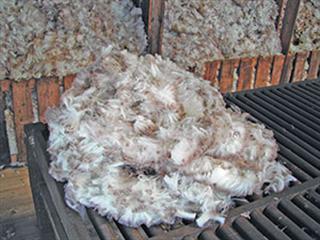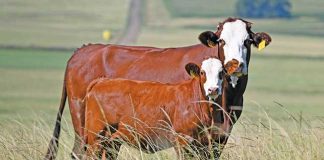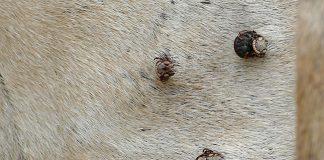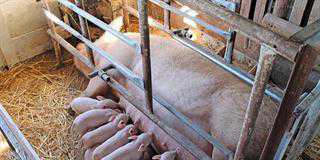
While microns are difficult to gauge in the shearing shed (although it is possible to distinguish between strong, medium and fine fleeces), measuring staple length can be simplified by using a special card or even a standard school ruler. Do not guess. Go the scientific route and measure a few staples from each fleece before placing them in the appropriate bin for packing into bales.
As a guideline, wool of 70mm to 80mm should be marked BB; wool of 60mm to 70mm should be marked B; wool of 50mm to 60mm should be marked C. These are followed by letters indicating microns. For example, FF stands for superfine wool under 19 microns; F for fine wool between 19,1 and 20 microns; M for wool of 20,1 to 22 microns; S for wool of 22,1 to 24 microns.

Measuring the fleece with a special card designed for the purpose.
It’s important to test each fleece for tensile strength before binning it. Simply hold a staple between the thumb and forefinger of both hands and pull while, at the same time, ‘twanging’ it with an index finger. If it breaks, the entire fleece must be packed separately. Breaks are caused by poor nutrition or disease at some stage during the growing season.













